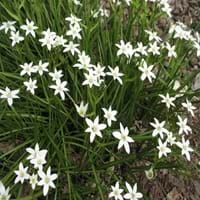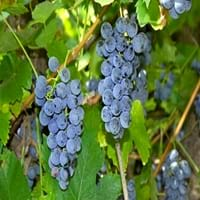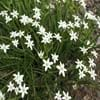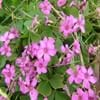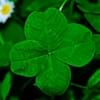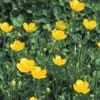Life Span
Perennial
Perennial
Type
Bulb or Corm or Tuber
Fruit
Origin
Eastern Europe, Southern Europe, Turkey
Northeastern United States, Mid-Atlantic United States, Southeastern United States, North-Central United States, Central United States, South-Central United States, Canada
Types
Not Available
Not Available
Habitat
Cultivated Beds, meadows
meadows, Roadsides, Sandy areas, Terrestrial
USDA Hardiness Zone
5-8
3-9
Sunset Zone
21,22
1a, 1b, 2a, 2b, 3a, 3b, 4, 5, 6, 7, 8, 9, 14, 15, 16, 17, 18, 19, 20, 21, 22, 23, 24
Habit
Clump-Forming
Vining/Climbing
Minimum Width
Not Available
Flower Color
White, Light Green, Silver
White
Flower Color Modifier
Bicolor
Bicolor
Fruit Color
Not Available
Red
Leaf Color in Spring
Green
Green, Dark Green
Leaf Color in Summer
Light Green
Dark Green
Leaf Color in Fall
Several shades of Green
Orange, Gold, Bronze
Leaf Color in Winter
Light Green
Light Green
Leaf Shape
Oblong-lanceolate
Oval Cordate
Plant Season
Spring
Spring, Summer, Fall
Sunlight
Full Sun, Partial Sun, Partial shade
Full Sun, Partial Sun
Type of Soil
Clay, Loam, Sand
Clay, Loam, Sand
The pH of Soil
Acidic, Neutral, Alkaline
Acidic, Neutral, Alkaline
Soil Drainage
Well drained
Well drained
Bloom Time
Early Spring, Spring
Late Spring, Early Summer, Summer
Tolerances
Drought
Drought
Where to Plant?
Container, Ground, Pot
Container, Ground
How to Plant?
Seedlings
Seedlings, Stem Planting
Plant Maintenance
Medium
Medium
Watering Requirements
Average Water Needs
Do Not over Water, Do not water frequently, Keep the ground moist but not water-logged, Requires a lot of watering, Requires watering in the growing season
In Summer
Lots of watering
Lots of watering
In Spring
Moderate
Moderate
In Winter
Average Water
Average Water
Soil pH
Acidic, Neutral, Alkaline
Acidic, Neutral, Alkaline
Soil Type
Clay, Loam, Sand
Clay, Loam, Sand
Soil Drainage Capacity
Well drained
Well drained
Sun Exposure
Full Sun, Partial Sun, Partial shade
Full Sun, Partial Sun
Pruning
No pruning needed
Remove damaged leaves, Remove dead branches, Remove dead leaves
Fertilizers
Water soluble fertilizers
All-Purpose Liquid Fertilizer, Fertilize every year, Nitrogen
Pests and Diseases
No serious insect or disease problems
Red blotch
Plant Tolerance
Drought
Drought
Flowers
Showy
Insignificant
Flower Petal Number
Single
Single
Foliage Texture
Medium
Coarse
Foliage Sheen
Glossy
Glossy
Allergy
Dermatitis, Poisonous to grazing animals
Slows blood clotting
Aesthetic Uses
Beautification, Showy Purposes
Not Used For Aesthetic Purpose
Beauty Benefits
Not Available
Improve skin condition
Environmental Uses
Air purification
Air purification
Medicinal Uses
Certain forms of cancer, Homeopathy
constipation, Diarrhea, Eye Problems, Heart problems, High blood pressure, High cholestrol, Liver problems, Metabolic disorders
Part of Plant Used
Root
Fruits, Leaves
Other Uses
Used As Food
Used As Food
Used As Indoor Plant
Yes
No
Used As Outdoor Plant
Yes
Yes
Garden Design
Alpine, Container, Mixed Border, Rock Garden / Wall
Edible, Fruit / Fruit Tree, Vine
Botanical Name
ORNITHOGALUM balansae
VITIS labrusca 'Catawba'
Common Name
Star-of-Bethlehem
Catawba Grape, Fox Grape
In Hindi
Star-of-Bethlehem
Catawba अंगूर
In German
Stern -of- Bethlehem
Catawba Traube
In French
Star- de - Bethléem
Catawba raisin
In Spanish
Estrella de Belen
Catawba uva
In Greek
Star- of- Βηθλεέμ
Catawba Σταφύλι
In Portuguese
Star of -Bethlehem
Catawba Grape
In Polish
Star- of- Betlejem
Catawba winogron
In Latin
Star of Bethlehem ,
Uva Catawba
Phylum
Magnoliophyta
Anthophyta
Class
Lilopsida
Magnoliopsida
Family
Asparagaceae
Vitaceae
Clade
Angiosperms, Monocots
Angiosperms, Eudicots, Rosids
Tribe
Ornithogaleae
Not Available
Subfamily
Ornithogaloideae
Vitoideae
Season and Care of Star-of-Bethlehem and Catawba Grape
Season and care of Star-of-Bethlehem and Catawba Grape is important to know. While considering everything about Star-of-Bethlehem and Catawba Grape Care, growing season is an essential factor. Star-of-Bethlehem season is Spring and Catawba Grape season is Spring. The type of soil for Star-of-Bethlehem is Clay, Loam, Sand and for Catawba Grape is Clay, Loam, Sand while the PH of soil for Star-of-Bethlehem is Acidic, Neutral, Alkaline and for Catawba Grape is Acidic, Neutral, Alkaline.
Star-of-Bethlehem and Catawba Grape Physical Information
Star-of-Bethlehem and Catawba Grape physical information is very important for comparison. Star-of-Bethlehem height is 10.20 cm and width 12.70 cm whereas Catawba Grape height is 300.00 cm and width Not Available. The color specification of Star-of-Bethlehem and Catawba Grape are as follows:
Star-of-Bethlehem flower color: White, Light Green and Silver
Star-of-Bethlehem leaf color: Green
Catawba Grape flower color: White
- Catawba Grape leaf color: Green and Dark Green
Care of Star-of-Bethlehem and Catawba Grape
Care of Star-of-Bethlehem and Catawba Grape include pruning, fertilizers, watering etc. Star-of-Bethlehem pruning is done No pruning needed and Catawba Grape pruning is done Remove damaged leaves, Remove dead branches and Remove dead leaves. In summer Star-of-Bethlehem needs Lots of watering and in winter, it needs Average Water. Whereas, in summer Catawba Grape needs Lots of watering and in winter, it needs Average Water.
